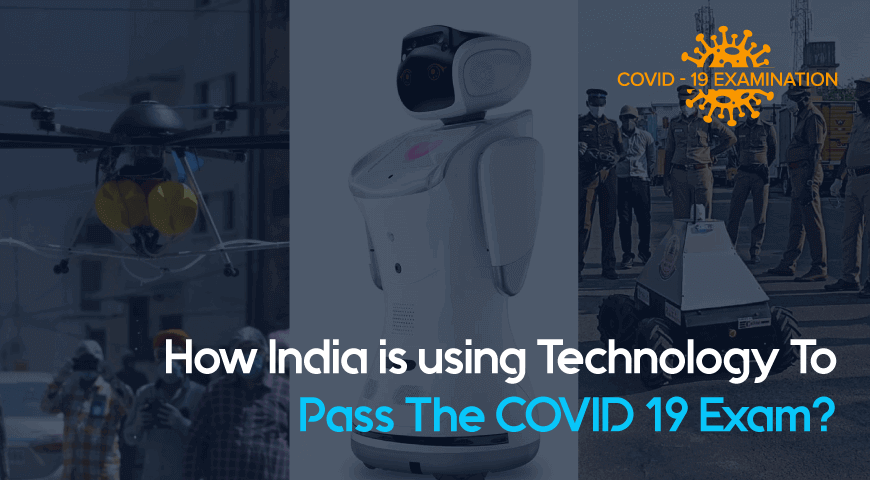How India Is Using Technology To Pass The COVID 19 Exam?

Governments around the world are using the best technology available to curb the spread of COVID-19. In India, due to our huge population, the risk of contamination is even bigger. Despite social distancing and self-isolation, there is a rapid increase in the contracted cases of Coronavirus. This situation could get worse because our country has only a handful of healthcare staff.
To narrow this gap, the Indian Government is determined to use a range of technologies to help and monitor people in this outbreak of COVID-19.
The biggest plus points of these technologies are that they can be accessed remotely and limits human exposure.
Let’s have an insight into how India is using technology to curb the spread of COVID-19.
Robots:
Hospitals like AIIMS Delhi, Fortis Bengaluru, and many others all over the country are using robots. They are either replacing human healthcare staff or being appointed only for COVID-19 wards.
Fortis Hospital is using Humanoid robots for screening of every individual, even their own medical healthcare staff before entering the premises. Robots at Fortis use face and speech recognition to ask questions and thermal scanners to take temperature readings.
These humanoid robots are highly rational. They have cameras and sensors installed in them to detect and monitor people passing through them. They can perform tasks that medical care staff often resist due to COVID 19. AIIMS Delhi has deployed two humanoid robots that can move autonomously and operate with zero human intervention.
Via Source: Humanoids take over as covid-19 reduces human contact
Corona Kavach Mobile Application:
A bunch of apps is launched by the state and central government to detect the infection of COVID-19. Ayush Kavach-COVID, Jharkhand Sahayta, Niramaya, COVA Punjab, Aarogya Setu are some of the many apps from the bunch, which helps the administration to track the risk of an outbreak at the initial stages.
The prime minister of the country Shri. Narendra Modi has repeatedly asked people of the country to use Aarogya Setu App. This app calculates the risk of catching Coronavirus from the neighborhood place by using “Bluetooth technology, algorithms and artificial intelligence”.
Via Source: Govt launches AarogyaSetu mobile app to track the spread of coronavirus
Drones:
Drones are being used by Gujarat, Delhi, Mumbai, Chennai, and other state governments for aerial surveillance, aerial photography, and public announcements in this outbreak of COVID-19. These drones have an automatic return to home feature in case of lost command situations.
All the drones are remotely accessible and help in monitoring people’s movement from an edge. They help to keep a track of all the people who are violating lockdown rules. Drones make it easy for the government to function all the quarantine strategies with minimum human interactions.
Via Source: Drones drive surveillance in Delhi’s containment zones
CCTV:
CCTV footage helps the government to keep a systematic track of every place. They can catch all the potentially contaminated people from a far distance with the help of CCTV recordings without much exposure. For instance, the Delhi government installed CCTVs in the hotspot of Jahangirpuri to restrict the movement of infected people and public gatherings. It keeps the police safe and also maintains order.
So, the government with the help of these technologies is keeping a strict eye on our well-being. However, we have to take care of ourselves by abiding by all the rules and regulations laid by the Central Government, State Government, and WHO. We can save ourselves and the whole of humanity by practicing self-isolation and good hygiene.
Though, we have come a long way in this battle. But we need to win it. It is only possible through collective effort. Let’s practice humanity, empathy, and compassion at its best to win this global pandemic. Let’s be responsible citizens of young India.
Leave a Comment